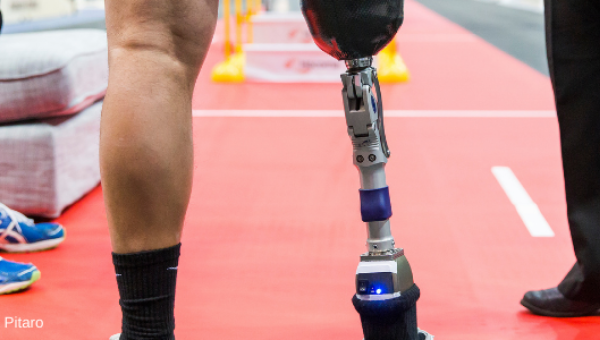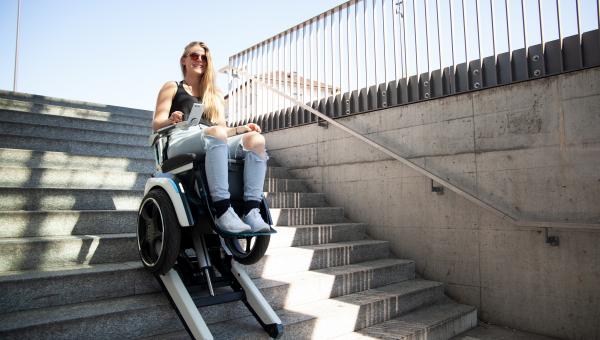Researchers enable paraplegic man to walk again

A paraplegic man can walk again after 12 years with the help of a brain implant. The implant is controlled with the help of thoughts and artificial intelligence.
Severe spinal injuries can result in permanent paralysis. Researchers have long searched for effective treatments to help people regain at least partial control of their bodies.
An international research team led by Swiss neuroscientist Grégoire Courtine, Professor of Neuroscience at EPFL, CHUV and UNIL together with the French government-funded technological research organisation CEA and other international research organisations, has recently taken a major step towards giving wheelchair-bound people new perspectives. A paraplegic man can walk again thanks to implants in his brain and spinal cord. He can control his movements with his thoughts. The research team used two different systems implanted in the test person and published the results in the prestigious scientific journal Nature.

Gert-Jan Oskam walking on his own in a UNIL research lab.
Result of previous research breakthrough
Dutchman Gert-Jan Oskam, now 40, is not the first paralysed person to reach this milestone - but the technology that has enabled him to stand, walk and even climb stairs is truly unique. Two systems that communicate wirelessly in real time are crucial to the success of Oskam's treatment.
The method is based in part on spinal cord stimulation. An implanted carrier with embedded electrodes delivers small electrical impulses to nerve pathways that stimulate neurons in the spinal cord. In the past, Courtine's team was able to restore some mobility to nine paralysed individuals (swiss.tech reported).
Insufficient brain-nerve communication
Although the method was effective at the time, the research team's approach was not suitable for everyday use. For example, patients were usually unable to spontaneously adapt their leg movements to different surfaces and the various demands of everyday life. A major problem was the insufficient communication between the brain and the nerve pathways in the back responsible for movement, Courtine said at a press conference. With previous spinal cord stimulations, patients usually had to rely on delayed external impulses, for example via a tablet or other technical devices. The delay in communication made it almost impossible for patients to make spontaneous decisions.
Digital bridge
The team set out to improve communication between the brain and spinal cord by means of digital technology. To do this, they developed a "Brain-Spine Interface" (BSI), a digital interface between the brain and the spine.
We have created a wireless interface between the brain and the spinal cord using brain-computer interface (BCI) technology that transforms thought into action.
The method used to treat Oskam consists of two fully implanted systems that communicate wirelessly via this digital bridge. In addition to the implanted neurons in his spinal cord, Oskam also received two implants in his cranial area, each of which measures neuronal activity via 64 electrodes and transmits the information to a portable computer unit. The computer uses this data to calculate the desired movement and translates it into stimulation commands that are transmitted in real time to the electrodes in his spinal cord. An electrical pulse generator and 16 small electrodes stimulate the motor neurons there, activating specific muscles.
Improvement for everyday life
For Oskam, the two implanted systems mean a better quality of life. More than ten years ago, he fell off his bike and has been partially paralysed ever since. For years, Oskam had no control over his legs and parts of his upper body and arms were also immobile. Today, he can do many everyday things on his own. Being able to stand at a bar and have a beer with friends is a huge improvement for him:
This simple pleasure represents a significant change in my life.
Helping many more patients
The researchers now want to make the new technology available worldwide as soon as possible. But further studies and tests are needed before this can happen. In the future, the method could also help paralysed people regain control of their arms and hands. To achieve this, the company ONWARD Medical, together with CEA and EPFL, has received support from the European Commission to develop a commercial version of the digital bridge.
This Swiss research project is an example of how a multidisciplinary approach working with national and international research institutions over a number of years can lead to previously unthinkable medical breakthroughs.




